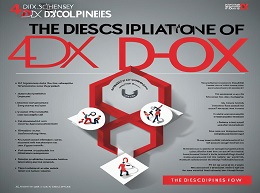The 4 Disciplines of Execution

"The 4 Disciplines of Execution" (4DX) by Chris McChesney, Sean Covey, and Jim Huling offers a systematic approach to achieving organizational goals. In this review, we'll explore the key principles of 4DX and illustrate how they can be applied in real-world scenarios to drive results.
Understanding the 4 Disciplines:
4DX introduces four key disciplines: focusing on the wildly important goals (WIGs), acting on lead measures, keeping a compelling scoreboard, and creating a cadence of accountability. Each discipline plays a crucial role in driving execution and achieving success.
Example:
Walmart's "zero waste" initiative exemplifies the focus on WIGs. By setting a specific goal to eliminate waste in its operations and supply chain, Walmart was able to drive significant cost savings and environmental benefits.
Focusing on Wildly Important Goals (WIGs):
WIGs are the most critical objectives that drive the success of an organization. 4DX emphasizes the importance of narrowing focus to a few WIGs to ensure clarity and alignment throughout the organization.
Example:
Google's focus on improving search relevance illustrates the power of WIGs. By prioritizing this key metric, Google has consistently delivered relevant search results to users, leading to increased user satisfaction and market dominance.
Acting on Lead Measures:
Lead measures are the specific actions or behaviors that directly influence the achievement of WIGs. 4DX encourages identifying and tracking lead measures to drive progress towards goals proactively.
Example:
Starbucks' focus on customer satisfaction is supported by lead measures such as employee training and store cleanliness. By consistently monitoring these lead measures, Starbucks ensures a positive customer experience and loyalty.
Keeping a Compelling Scoreboard:
A compelling scoreboard provides visibility into progress towards WIGs and motivates team members to take action. 4DX emphasizes the importance of visually engaging scoreboards that track both lag and lead measures.
Example:
Amazon's use of data-driven dashboards exemplifies the power of compelling scoreboards. By providing real-time visibility into key metrics such as sales, inventory, and customer satisfaction, Amazon empowers employees to make informed decisions and drive results.
Creating a Cadence of Accountability:
Regular check-ins and accountability sessions are essential for maintaining momentum and driving execution. 4DX advocates for weekly meetings where teams review progress, celebrate successes, and identify areas for improvement.
Example:
Apple's weekly "top 100" meeting is a prime example of a cadence of accountability. By bringing together senior executives to review progress on key initiatives and address challenges, Apple ensures alignment and accountability across the organization.
"The 4 Disciplines of Execution" provides a practical framework for achieving business goals in today's fast-paced environment. By focusing on WIGs, acting on lead measures, maintaining compelling scoreboards, and creating a cadence of accountability, organizations can drive execution and achieve extraordinary results.












